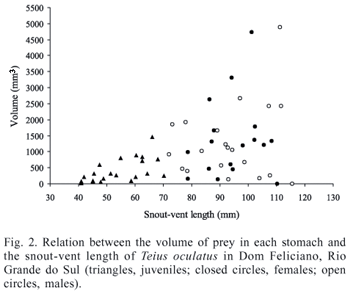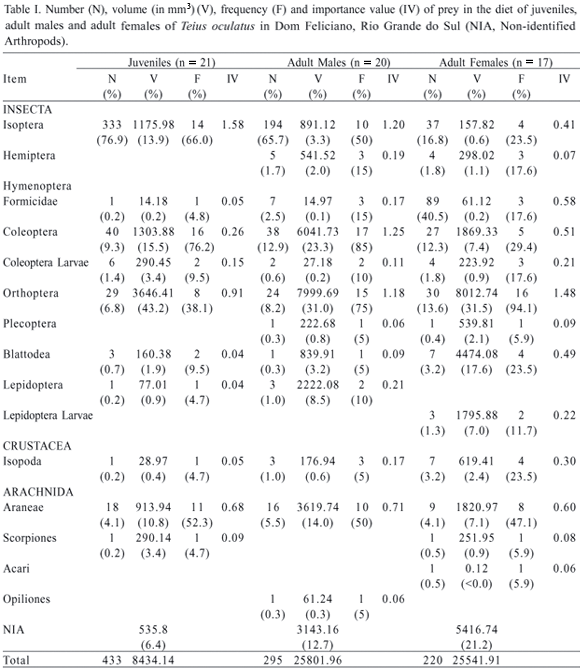We analyzed stomach contents of 58 specimens of Teius oculatus (D'Orbigny & Bibron, 1837) (20 adult males, 17 adult females and 21 juveniles) captured in Dom Feliciano, RS, Brazil, to evaluate diet composition and sexual and ontogenetic variations in prey consumption. Diet was composed of 15 prey categories, all arthropods. Orthoptera was the most frequent prey type. Quantitatively, termites were the most important prey item (59.5%). There were no significant differences between the diets of adult males and females. Ontogenetic differences were found, mainly concerning volume of prey consumed. Adult lizards ingested significantly larger prey than juveniles (U = 170.00; p < 0.001). Juveniles, although having a comparatively less diverse diet (10 prey types) consumed a larger number of items (45.7% of total). Diet similarity was higher between juveniles and adult males (Ojk = 0.97) and prey diversity was higher in the diet of adult females (H' = 2.65). Based on importance value index the most important item in the diet of T. oculatus was Orthoptera. We conclude that T. oculatus in Dom Feliciano has a relatively generalized diet and it is an opportunist lizard, feeding on arthropods, mainly insects.
Lizards; diet; ontogenetic variation





